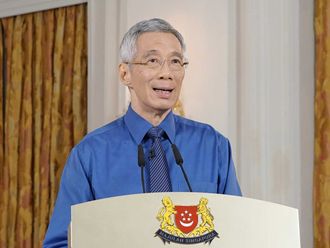Literature lovers who come looking for Rue Catinat in this city once known as Saigon better hope they happen upon a Francophile octogenarian.
The street, made famous in Graham Greene's The Quiet American, hasn't been called that in more than half a century. These days, it's called Dong Khoi (Uprising) Street. (And before that, it was called Freedom Street.)
The story of Catinat-Freedom-Uprising Street is the story of Vietnam itself: The last half-century has seen French, pro-American and communist regimes, along with an economic opening, each inspiring a flutter of new names.
"I've experienced three name changes involving the same street," said Nguyen Thanh Minh, 56, a restaurant worker in Ho Chi Minh City, which has had its own name change. "It's all a bit confusing and can take five or six years to get used to the new one. Sometimes when you mail a letter, you have to write both addresses so it gets delivered."
Take Rue Catinat, which in The Quiet American was portrayed as the epitome of rundown, opium-soaked Saigon under French rule.
Given the baggage associated with this particular street, named after a warship that in 1856 helped cement France's imperial grip over the country, it's hardly surprising the newly independent Vietnamese renamed it as quickly as you can say au revoir.
After independence in 1954, as locals celebrated a parade of French derrieres returning to Paris, anti-communist dictator Ngo Dinh Diem renamed it Tu Do (Freedom) Street, part of a reassertion of Vietnamese names throughout the country.
Freedom of a sort
Although the new name may have helped Diem cozy up to the Americans in the run-up to the Vietnam War, it didn't bring the freedom from vice that the Catholic moralist dictator sought.
A flood of American GIs in the 1960s brought more drugs and sex to Freedom Street, along with rock 'n' roll and traffic jams. A Vietnamese joke at the time, after city planners routed all vehicles in a single direction, held that freedom was a one-way street reserved for Americans.
With US spending soaring and more shops adopting English names, a worried Saigon government ordered that all stores feature Vietnamese names three times larger than foreign names on their signs. In one noted example, the ‘Texas' bar was reborn as the ‘Te-xa' bar in a larger font.
With the fall of Saigon in 1975, triumphant Viet Cong went on a sign-painting spree, especially in newly renamed Ho Chi Minh City, replacing street names honouring anti-communist heroes with those of communist luminaries.
The street known as Freedom became Uprising Street, after a revolutionary Viet Cong movement in nearby Ben Tre province.
Recently, as more affluent Vietnamese bridle under Communist Party restrictions, that's prompted a joke that everything may be on the rise, but freedom is gone.
Communist revolutionary Nguyen Kim Bach, 70, who helped plan the 1968 Tet offensive, likes the latest crop of street names. "It's often good to see a shift, especially when you don't like what the old names represent," he said.
Marie Nguyen, 59, who fled Vietnam in the 1970s with her husband, a paratrooper with the anti-communist south, and who now splits her time between Vietnam and Australia, countered: "The old names are part of our history. I much prefer them".
The Communist Party's efforts to imprint its revolutionary revamp on the citizenry have been helped by Vietnam's demographics, with one of the youngest populations in the world.
The handful of French street names that have survived in Ho Chi Minh City, down from 60 French-named streets in colonial times, honour scientists who presumably remain above the ideological fray, including Louis Pasteur (1822-95) and Nobel laureate Marie Curie (1867-1934).
"If the name changes, but the street looks the same, it's not a problem," said Nguyen Thanh Minh, the restaurant worker. "But if the whole appearance changes, it gets confusing. Fortunately the numbers stay the same."
One change that hasn't really stuck, even after 35 years, is Ho Chi Minh City, which most locals still refer to as Saigon.
"Most Vietnamese prefer the old name," said Nguyen Kim Bach. "Saigon is only two syllables. When you have to say ‘the City of Ho Chi Minh', it can be a bit of a mouthful."












